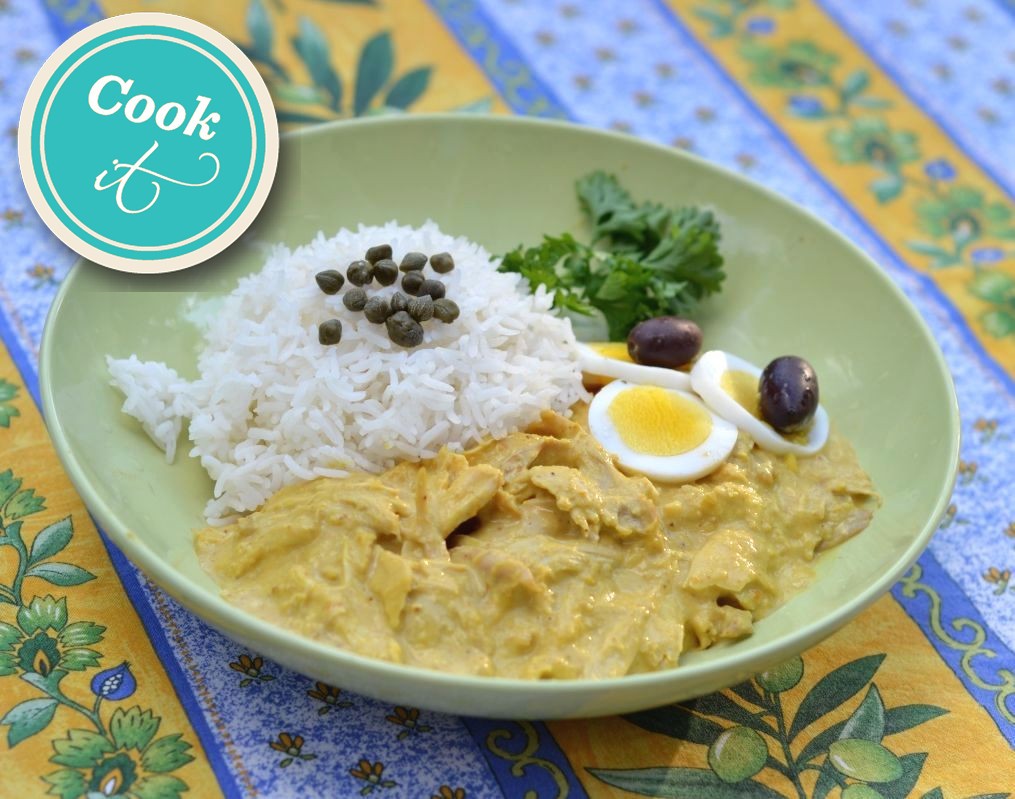Peruvian cuisine is suddenly making headlines. Lima has been named the gastronomic capital of South America and celebrity chefs like Gastón Acurio and Rafael Osterling have succeeded in making new wave Peruvian gastronomy known to the world. I wanted to understand the roots of the Nuevo Andino culinary phenomenon, so I went to the source.
It takes a bit of effort to get this far off the beaten track. I flew from Miami to Lima, then over the Andes to Puerto Maldonado, a ramshackle river port deep in the Amazon rainforest, near the border with Brazil. There I boarded a motorized longboat and puttered downstream, watching snowy herons tiptoeing along the muddy banks and crocodiles slithering into the brick coloured waters of the Madre de Dios river. Every now and then, a makeshift jetty came into view, each indistinguishable from the next but all known to my skipper, who cut the engines after an hour and glided to a stop by a set of muddy steps leading to Inkaterra Reserva Amazónica, a luxury eco-lodge where I’d spend the next two nights enjoying the scents and sounds of the jungle from a queen sized bed cocooned in mosquito net.
The following morning another longboat took me to the Tambopata National Reserve, one of the last refuges of the jaguar and verdant home to red howler monkeys, side-neck turtles, anacondas, macaws and prehistoric Stinkbirds. Slathered with bug repellant, pants tucked into socks and shirtsleeves rolled down, I followed guide Jackson on a muddy trail through the jungle. We hiked for about an hour, carefully avoiding poisonous snakes and spiders, fire ants and plants with stinging leaves and razor sharp spikes, to a glade where dappled sunlight filtered through a leafy canopy filled with chirps, cheeps, chatterings and squawks. Jackson took the helm in a dugout canoe and we paddled silently through a narrow channel enclosed entirely by jungle vegetation. Gradually the green tunnel filled with light and we burst out into brilliant sunshine and the sparkling blue expanse of Lake Sandoval.
If you are lucky (I wasn’t) you may catch sight of the endangered giant river otter in Lake Sandoval. It’s crystal clear waters are full of piranhas, stingrays, freshwater crabs, catfish and the object of my Indiana Jones-like quest — gamitana.
A freshwater fish closely related to the piranha, gamitana is considered one of the finest fish living in the Amazon basin. It feeds on seeds and fruit and can grow to a metre in length and 30 kilograms in weight. Its flesh is white and silky with a clean, sweet taste. That night, in Reserva Amazónica’s lantern-lit bamboo and thatch dining room, I dined on gamitana poached in a sauce fragrant with leeks, ginger and basil.
Reserva Amazónica chef Raul Camayo Luya combines traditional foods of the Peruvian Amazon with fresh organic produce grown at a nearby family-run farm. His menu features superb Andean beef, free range Amazonian chickens and fish from the pristine waters of Lake Sandoval, with a locally grown market basket filled with Brazil nuts, hearts of palm, hot and sweet peppers, tomatoes, avocadoes, tender greens, and the Peruvian staples of quinoa, corn, potatoes and beans. His dessert repertoire capitalizes on the Amazonian bounty of tropical fruits, sugar cane, coconut, coffee and chocolate. Lodge bartender Ysmael Chavez steeps jungle produce in bottles of pisco (Peru’s universally enjoyed grape brandy) and creates exotic cocktails flavoured with passionfruit, ginger, starfruit, wild oranges, even hot peppers and coca leaves. He tells me Mick Jagger is a fan.
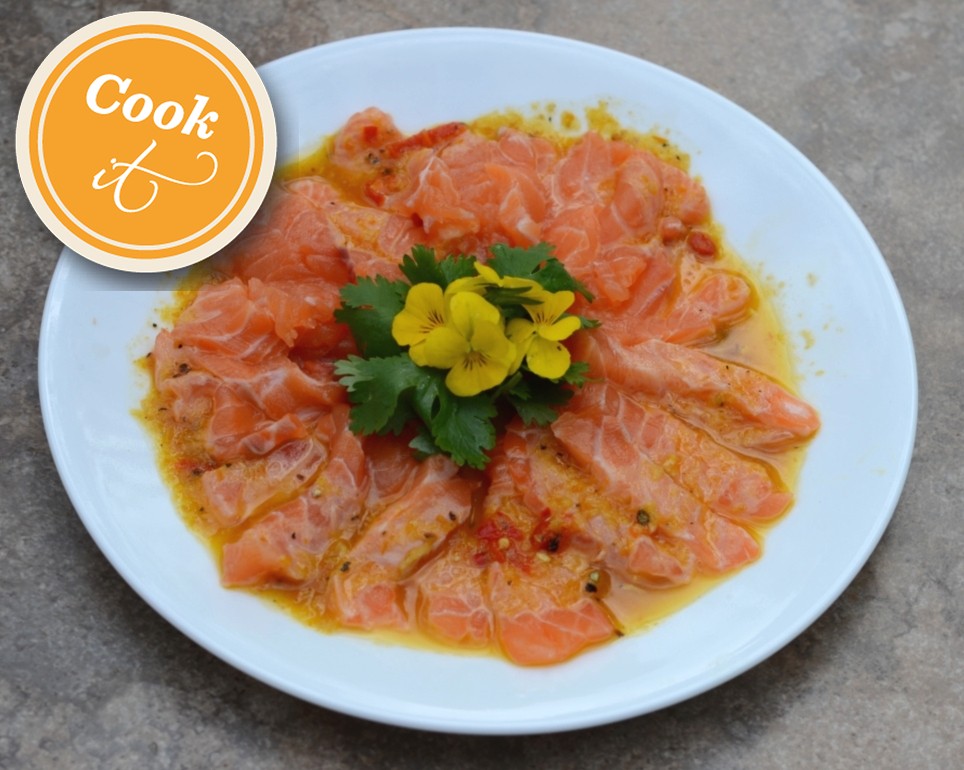
Neither sipping coca tea nor chewing the bitter leaves did much to alleviate the splitting headache that accompanied my transfer from the steamy Amazonian lowlands to the cool elevations of Cusco. Nestled in the crumpled folds of the high Andes 11,000 feet above sea level, Cusco will literally leave you gasping, until you either acclimatize to the lack of oxygen or take medication.
A starting point for many travellers en route to Macchu Pichu, the extraordinary ‘lost city’ of the Incas, Cusco is a modern metropolis with a beautiful historic core, a bustling central food market and plenty of restaurants offering Peruvian cuisine, both traditional and nuevo. At Incanto, a stylish light-filled space with a modern locavore menu, I enjoyed rare alpaca loin bruschetta, locally caught river trout, and Aji de Gallina, a Criollo chicken dish that combines Spanish influences (olives, hard boiled eggs and a cream sauce) with Peru’s brilliant yellow ají amarillo chile pepper.
In the Cusco central market, stalls are piled high with aji amarillo and many other types of chile pepper. Chiles are a fundamental element of Peruvian cuisine – the Inca celebrated them in folklore and poetry and freeze dried ajis in the mountainous regions around Macchu Pichu, where nights are cold and days sunny and dry. Ajis were used to preserve fish in an early form of ceviche and, according to European colonizers, were as indispensible to the native Peruvians as salt.
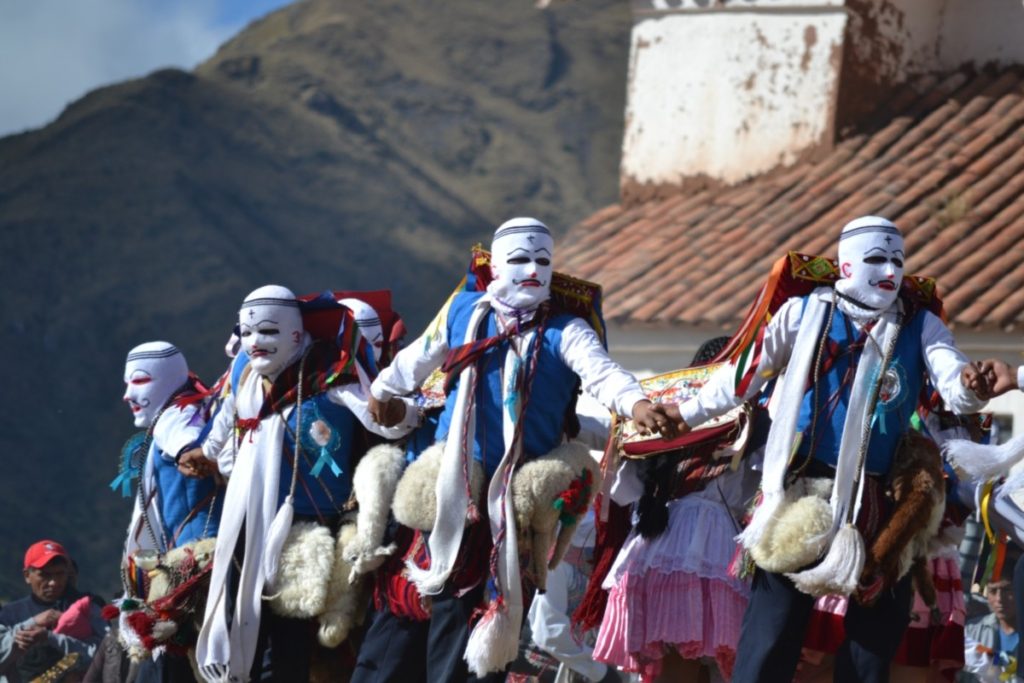
The market is also where you will understand the importance of corn and potatoes in the local diet. The staple choclo corn has huge kernels, a nutty taste and an addictive chewy texture. It stars in a rustic vegetable soup, (sopa de terigu) and ground into flour is the basis of an impressive range of cornbreads, cakes and cookies. A purple variety is used to make a sweet drink called chicha morada. Potatoes are native to Peru and there are more than 6,000 varieties of indigenous potatoes and potato-like tubers. In my limited experience, blue ones were stodgy and bland, little yellow ones better than any spud I’ve ever tasted.
In Cusco’s magnificent Cathedral hangs a massive oil painting of the Last Supper. Everything looks as it should until you zoom in on the food. Jesus and his disciples are about to tuck into a meal of potatoes, chili peppers, Andean bread, papayas and the centrepiece, a whole roast guinea pig.
My first taste of guinea pig wasn’t promising. Cooked earlier and reheated, its skin was so tough I could hardly get through to the few morsels of meat beneath. My second encounter, when I stumbled into a town celebrating the Corpus Christi festival with a community picnic, was even worse. Chiriuchu, the region’s signature Corpus Christi dish, is a mixed plate piled with fresh cheese, sausage, stewed chicken, guinea pig and a haggis of its innards, beef jerky, dried corn, a deep fried corn fritter and a tangle of seaweed. For good measure, it’s garnished with a skein of pallid trout roe. I’m a catholic eater but chiriuchu is a leading candidate for the most godawful thing I’ve met on a plate.
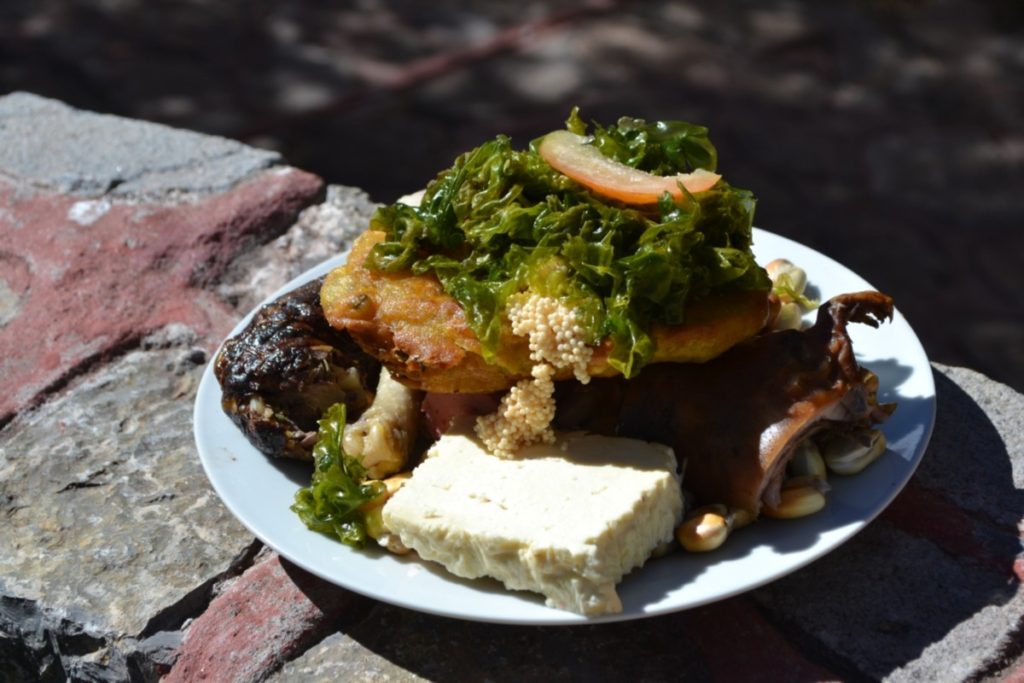
Third time, however, was the charm. At Quinta Eulalia, a rustic restaurant in Cusco specializing in traditional home-style food, the little critter was brought to the table fresh from the oven, golden and crispy, the meat tender and sweet. Equally well prepared and delicious were other selections from the blackboard menu… lamb ribs, chicharron (deep fried hunks of pork), sliced beef tongue in gravy, stuffed rocoto chiles and chairo, a soup of offal with lima beans, pumpkin and potatoes. Washed down with the local Cusqueña lager, it was a fine introduction to a regional cuisine that has changed little since pre-Columbian times.
The Inca are not a vanished people. In rural villages they live as they have always done, in simple houses with beaten earth floors, a hearth for cooking and a herd of guinea pigs scurrying underfoot. Produce comes from the surrounding fields and meat from the local market, where sheep, pigs, rabbits, guinea pigs, alpaca, ducks and chickens are purchased live and taken home for cooking or further fattening for the table.
Not far from Cusco is the town of Maras, famous for its hillside network of salt pans. Indigenous methods of harvesting salt were improved by Spanish Jesuits and today Maras salt is prized by gourmets all over the world. The fertile Sacred Valley, which follows the meandering course of the Urubamba River (longer than the Nile and an important tributary of the Amazon), supplies Cusco with a cornucopia of fruits, vegetables, corn, beans and all those potatoes. On the high pastures, farming hamlets surrounded by fields of wheat, lima beans, corn and multi coloured quinoa ripening under the clear blue Andean sky, present a scene of timeless tranquility. A wad of plastic bags mounted on a stick marks a house where chicha, corn beer, is for sale. This freshly made brew is only mildly alcoholic and has a pleasant, yeasty taste.
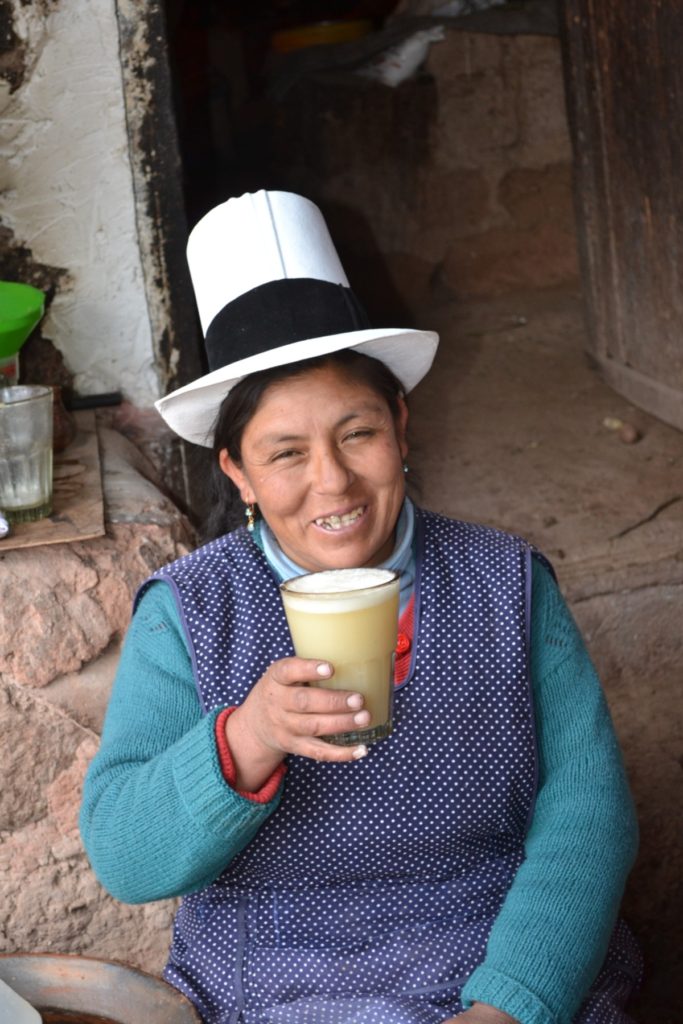
Near the town of Moray, the remnants a fourteenth century research station show the sophistication of Inca agricultural science. A series of concentric terraces, calibrated for temperature differences, were used to determine which crop varieties would thrive at certain altitudes. Crop storage facilities, tucked high on mountainsides throughout the region, provided insurance against bad seasons and emergencies.
Inca ingenuity ensured that an estimated population of 16 million were fed. It was not enough, however, to repel the advance of 160 Spaniards led by Francisco Pizarro, who took advantage of internecine rivalries to conquer the Inca capital, Cusco, in 1537. Under the rampages of smallpox and warfare, the mighty Inca civilization crumbled, its population decimated.
The enormous wealth extracted by the Spanish from Peru is evidenced in the magnificent churches and civic buildings of Lima. The historic centre of the capital city is a UNESCO World Heritage site and in the suburbs, elegant colonial mansions still repose among Spanish planted fruit trees and olive groves. But Lima is also a sprawling modern metropolis with youthful energy and the creative chefs who have given birth to nuevo Andino cuisine.
At Restaurant Huaca Pucllana, a fine dining establishment adjoining an Inca archeological site, modern Peruvian cuisine pays tribute to its roots. Seated at tables on the terrace, diners have a view of an impressive Inca pyramid constructed of handmade adobe bricks. On the menu are traditional Creole dishes and modern interpretations using typical Peruvian ingredients. Lunch began with a salad of organic lettuces, goat cheese and caramelized piquillo peppers, garnished with strips of hearts of palm. Next came locally fished sea bass crusted in red quinoa, plated on a bed of asparagus and artichokes grown in the three river valleys that serve as Lima’s market garden. Dessert was a caramel custard laced with cherimoya (custard apple) topped with a scoop of cherimoya ice cream. It was a meal that encapsulated the lively spirit, respect for tradition and confidence of the new Peruvian table.
